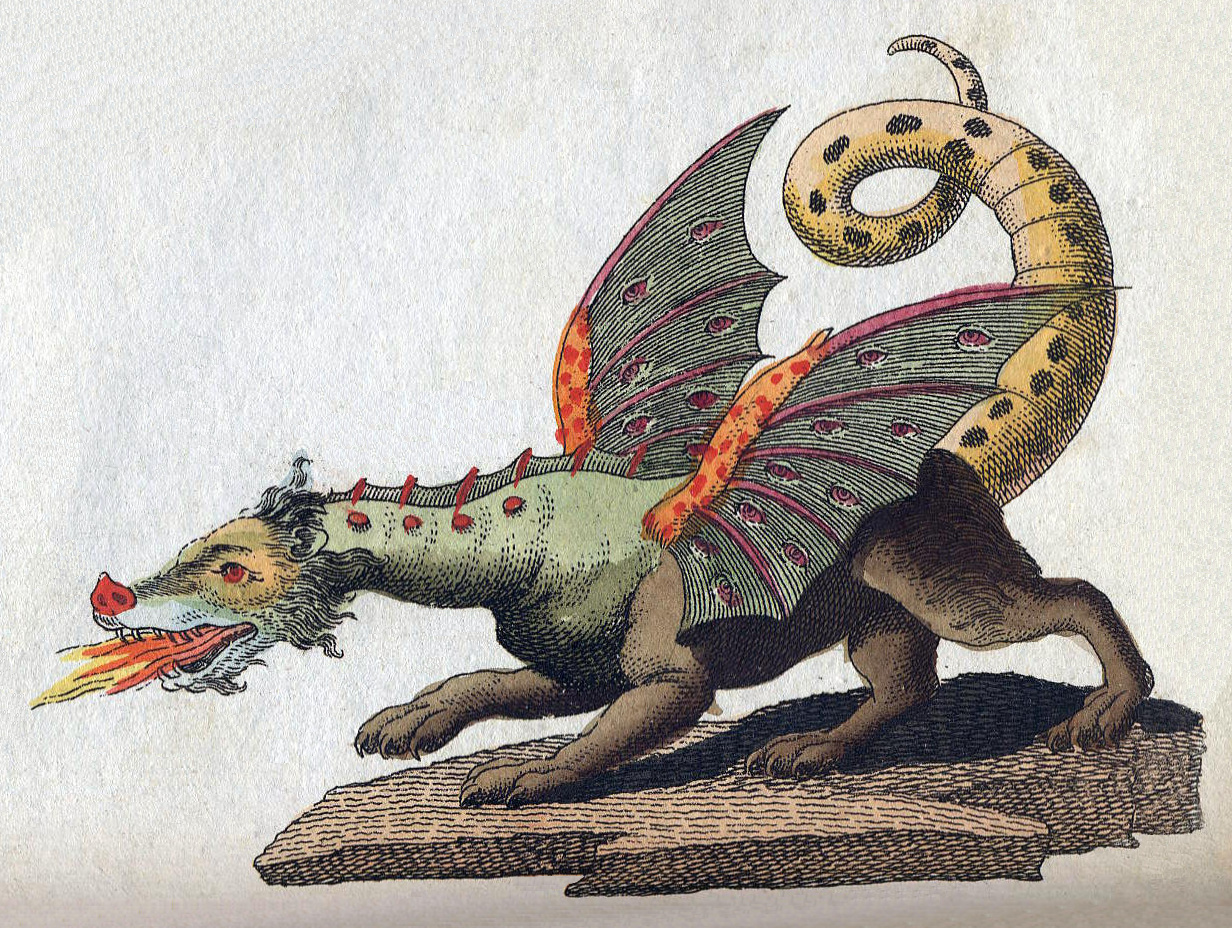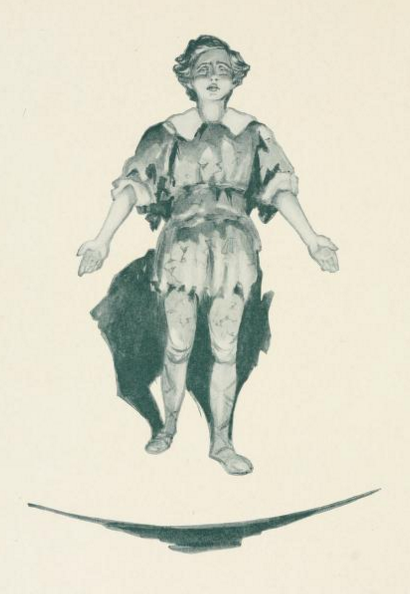|
The Marvellous Land Of Snergs
''The Marvellous Land of Snergs'' is a children's fantasy, written by E. A. Wyke-Smith and illustrated by the ''Punch'' cartoonist George Morrow. It was originally published in Britain by Ernest Benn in September 1927, and later published in the U.S. in 1928 by Harper & Brothers. It is notable as an inspiration source for J. R. R. Tolkien's ''The Hobbit''. Plot summary ''The Marvellous Land of Snergs'' is set on a fictional island somewhere on Earth, but difficult to reach. On the island is a colony of children (rescued from neglect by the redoubtable Miss Watkyns), the crew of the ''Flying Dutchman'', and the Snergs, a race of short, thick-set, helpful people. Unfortunately Golithos, a reformed (but relapsing) ogre, and Mother Meldrum, a wicked witch, also live there. Also in the forest across the river there are tigers, brown bears, European dragons, ghouls, and unicorns. When Sylvia and Joe run away for a big adventure their lives are in deadly peril when they fall into the c ... [...More Info...] [...Related Items...] OR: [Wikipedia] [Google] [Baidu] |
Edward Wyke Smith
Edward Augustine Wyke-Smith (12 April 1871 – 16 May 1935) was an English adventurer, mining engineer and writer. He is known mainly for ''The Marvellous Land of Snergs'', a children's fantasy novel he wrote as E. A. Wyke-Smith, whose "snergs" provided inspiration for Tolkien's creation of hobbits. Biography Born Edward Augustine Smith, he "reclaimed older family name Wyke-Smith" by deed poll. After a time in the Royal Horse Guards, Horse Guards at Whitehall, Wyke-Smith joined the crew of a Iron-hulled sailing ship, windjammer and sailed to Australia and the west coast of the United States. In the American West, he worked as a cowboy. Back in England, he studied mine engineering and later managed mines in Mexico, the Sinai, South America, Spain, Portugal and Norway. During the 1913 Mexican Revolution, revolution in Mexico, he rescued his wife from the capital. He built a pontoon bridge across the Suez canal during the First World War. According to John Clute, Wyke-Smith " ... [...More Info...] [...Related Items...] OR: [Wikipedia] [Google] [Baidu] |
European Dragons
The European dragon is a legendary creature in folklore and mythology among the overlapping cultures of Europe. The Roman poet Virgil in his poem ''Culex'' lines 163-201, describing a shepherd having a fight with a big constricting snake, calls it "serpens" and also " draco", showing that in his time the two words probably could mean the same thing. In and after the early Middle Ages, the European dragon is typically depicted as a large, fire-breathing, scaly, horned, lizard-like creature; the creature also has leathery, bat-like wings, four legs, and a long, muscular prehensile tail. Some depictions show dragons with one or more of: feathered wings, crests, ear frills, fiery manes, ivory spikes running down its spine, and various exotic decorations. In folktales, dragon's blood often contains unique powers, keeping them alive for longer or giving them poisonous or acidic properties. The typical dragon in Christian culture protects a cavern or castle filled with gold and t ... [...More Info...] [...Related Items...] OR: [Wikipedia] [Google] [Baidu] |
Novels Set On Fictional Islands
A novel is a relatively long work of narrative fiction, typically written in prose and published as a book. The present English word for a long work of prose fiction derives from the for "new", "news", or "short story of something new", itself from the la, novella, a singular noun use of the neuter plural of ''novellus'', diminutive of ''novus'', meaning "new". Some novelists, including Nathaniel Hawthorne, Herman Melville, Ann Radcliffe, John Cowper Powys, preferred the term "romance" to describe their novels. According to Margaret Doody, the novel has "a continuous and comprehensive history of about two thousand years", with its origins in the Ancient Greek and Roman novel, in Chivalric romance, and in the tradition of the Italian renaissance novella.Margaret Anne Doody''The True Story of the Novel'' New Brunswick, NJ: Rutgers University Press, 1996, rept. 1997, p. 1. Retrieved 25 April 2014. The ancient romance form was revived by Romanticism, especially the histori ... [...More Info...] [...Related Items...] OR: [Wikipedia] [Google] [Baidu] |
Children's Fantasy Novels
A child ( : children) is a human being between the stages of birth and puberty, or between the developmental period of infancy and puberty. The legal definition of ''child'' generally refers to a minor, otherwise known as a person younger than the age of majority. Children generally have fewer rights and responsibilities than adults. They are classed as unable to make serious decisions. ''Child'' may also describe a relationship with a parent (such as sons and daughters of any age) or, metaphorically, an authority figure, or signify group membership in a clan, tribe, or religion; it can also signify being strongly affected by a specific time, place, or circumstance, as in "a child of nature" or "a child of the Sixties." Biological, legal and social definitions In the biological sciences, a child is usually defined as a person between birth and puberty, or between the developmental period of infancy and puberty. Legally, the term ''child'' may refer to anyone below th ... [...More Info...] [...Related Items...] OR: [Wikipedia] [Google] [Baidu] |
1927 British Novels
Nineteen or 19 may refer to: * 19 (number), the natural number following 18 and preceding 20 * one of the years 19 BC, AD 19, 1919, 2019 Films * ''19'' (film), a 2001 Japanese film * ''Nineteen'' (film), a 1987 science fiction film Music * 19 (band), a Japanese pop music duo Albums * ''19'' (Adele album), 2008 * ''19'', a 2003 album by Alsou * ''19'', a 2006 album by Evan Yo * ''19'', a 2018 album by MHD * ''19'', one half of the double album ''63/19'' by Kool A.D. * ''Number Nineteen'', a 1971 album by American jazz pianist Mal Waldron * ''XIX'' (EP), a 2019 EP by 1the9 Songs * "19" (song), a 1985 song by British musician Paul Hardcastle. * "Nineteen", a song by Bad4Good from the 1992 album '' Refugee'' * "Nineteen", a song by Karma to Burn from the 2001 album ''Almost Heathen''. * "Nineteen" (song), a 2007 song by American singer Billy Ray Cyrus. * "Nineteen", a song by Tegan and Sara from the 2007 album '' The Con''. * "XIX" (song), a 2014 song by Slipknot. ... [...More Info...] [...Related Items...] OR: [Wikipedia] [Google] [Baidu] |
Mythopoeic Society
The Mythopoeic Society (MythSoc) is a non-profit organization devoted to the study of mythopoeic literature, particularly the works of J. R. R. Tolkien, Charles Williams, and C. S. Lewis, all members of The Inklings, an informal group of writers who met weekly in C. S. Lewis' rooms at Magdalen College, Oxford, from the early 1930s through late 1949. History The Mythopoeic Society was founded in 1967 by Glen H. GoodKnight. Originally composed of discussion groups based in the Los Angeles area, it expanded to include organized branches across North America; in 1972 it assimilated the Tolkien Society of America. Membership is open to those who read, study, or write in the genres of myth and fantasy. Publications Three periodical publications are produced by the society: * ''Mythprint'' is a quarterly newsletter with notices of Society activity, book reviews and articles; Mythopoeic Society membership includes electronic Mythprint (PDF), also available in print format by sub ... [...More Info...] [...Related Items...] OR: [Wikipedia] [Google] [Baidu] |
David Bratman
David Bratman is a librarian and Tolkien scholar. Biography David Bratman was born in Chicago to Robert Bratman, a physician, and his wife Nancy, an editor. He was one of four sons in the family. He was brought up in Cleveland, Ohio and then in California. He was educated at the University of California-Berkeley, and took his M.L.S. at the University of Washington. He works as a librarian at university and other libraries. He has contributed to Tolkien scholarship since 1977, including 13 entries for the J. R. R. Tolkien Encyclopedia, and helped to run the Hugo Awards for science fiction and fantasy. Bratman has edited the journal ''Mythprint'' for the Mythopoeic Society; he edits and contributes to the journal ''Tolkien Studies'' and to ''Mythlore'', a journal on the Inklings The Inklings were an informal literary discussion group associated with J. R. R. Tolkien and C. S. Lewis at the University of Oxford for nearly two decades between the early 1930s and late 1949. ... [...More Info...] [...Related Items...] OR: [Wikipedia] [Google] [Baidu] |
Alice's Adventures In Wonderland
''Alice's Adventures in Wonderland'' (commonly ''Alice in Wonderland'') is an 1865 English novel by Lewis Carroll. It details the story of a young girl named Alice (Alice's Adventures in Wonderland), Alice who falls through a rabbit hole into a fantasy world of anthropomorphism, anthropomorphic creatures. It is seen as an example of the literary nonsense genre. The artist John Tenniel provided 42 wood-engraved illustrations for the book. It received positive reviews upon release and is now one of the best-known works of Victorian literature; its narrative, structure, characters and imagery have had widespread influence on popular culture and literature, especially in the fantasy genre. It is credited as helping end an era of didacticism in children's literature, inaugurating a new era in which writing for children aimed to "delight or entertain". The tale plays with logic, giving the story lasting popularity with adults as well as with children. The titular character Alice shar ... [...More Info...] [...Related Items...] OR: [Wikipedia] [Google] [Baidu] |
Peter Pan
Peter Pan is a fictional character created by List of Scottish novelists, Scottish novelist and playwright J. M. Barrie. A free-spirited and mischievous young boy who can fly and Puer aeternus, never grows up, Peter Pan spends his never-ending childhood having adventures on the mythical island of Neverland as the leader of the Lost Boys (Peter Pan), Lost Boys, interacting with Fairy, fairies, Piracy, pirates, mermaids, Native Americans in the United States, Native Americans, and occasionally ordinary children from the world outside Neverland. Peter Pan has become a cultural icon symbolizing youthful innocence and escapism. In addition to two distinct works by Barrie, ''The Little White Bird'' (1902, with chapters 13–18 published in ''Peter Pan in Kensington Gardens'' in 1906), and the West End theatre, West End stage play ''Peter and Wendy, Peter Pan; or, the Boy Who Wouldn't Grow Up'' (1904, which expanded into the 1911 novel ''Peter and Wendy''), the character has been featu ... [...More Info...] [...Related Items...] OR: [Wikipedia] [Google] [Baidu] |




